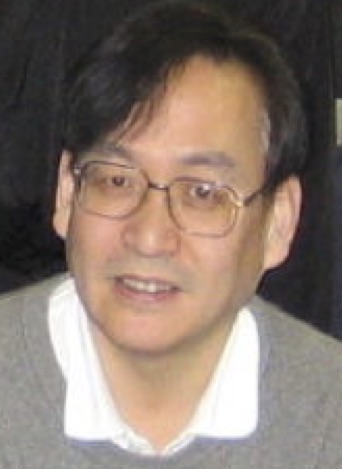Org. Synth. 2018, 95, 403-424
DOI: 10.15227/orgsyn.095.0403
Stereoretentive Iron-catalyzed Cross-coupling of an Enol Tosylate with MeMgBr
Takeshi Tsutsumi, Yuichiro Ashida, Hiroshi Nishikado, and Yoo Tanabe*
1
Checked by Zhaobin Han and Kuiling Ding
1. Procedure (Note 1)
A.
Methyl (Z)-2-phenyl-3-(tosyloxy)acrylate [(Z)-1)]. A 300-mL, three-necked, round-bottomed flask is attached to a
CaCl2 drying tube, which is capped with a glass stopper, and fitted with a thermometer and a Teflon-coated magnetic stir bar (
Note 2).
Methyl 2-phenylacetate (10.54 g, 70 mmol) (
Note 3),
methyl formate (6.52 mL, 105 mmol) (
Note 4), and
THF (70 mL) (
Note 5) are added and a septum is added to the middle neck. The vigorously stirred colorless solution is immersed in an ice-cooling bath, and
sodium tert-butoxide (
NaOt-Bu) (10.12 g, 105 mmol) (
Note 6) is added in 5 portions over 5 ~ 10 min after temporarily removing the septum while maintaining the inner temperature below 10 °C (Figure 1). The suspension becomes a well-mixed pale yellow slurry (Figure 2) ca. 5 min after the addition of
NaOt-Bu.
Figure 1. Addition of sodium tert-butoxide
Figure 2. Reaction mixture after the addition of NaOt-Bu
The reaction mixture is stirred at 0 ~ 5 °C for 1 h.
p-Toluenesulfonyl chloride (
TsCl) (20.03 g, 105 mmol) (
Note 7) is added in 5 portions over 5 ~ 10 min after temporarily removing the septum while maintaining the inner temperature below 10 °C (
Note 8) (Figure 3). The septum is replaced and the solution is stirred at 0 ~ 5 °C for 1 h. Water (70 mL) is added to the resulting mixture over the course of 1 min to maintain the inner temperature below 20 °C. The suspension immediately develops two transparent phases.
Figure 3. Addition of TsCl
The mixture is transferred to a 500-mL separatory funnel and the flask is rinsed with ethyl acetate (2 x 10 mL), which is added to the separatory funnel. The organic phase is separated and the aqueous phase is re-extracted with ethyl acetate (2 x 50 mL). The combined organic phases are washed with H2O (70 mL) and brine (70 mL), dried over Na2SO4 (70 g), filtered, and concentrated under reduced pressure using a rotary evaporator (15 mmHg, 40 °C). The flask containing the residue was attached to a vacuum line with gentle heating using a dryer to completely remove the ethyl acetate.
The slightly pale yellow oil solidifies after a few minutes in a 100-mL round-bottomed flask (
Note 9) (Figure 4). The crude solid (38.34 g) is crushed into particles, and the flask is equipped with a reflux condenser (10 cm height) and a Teflon-coated magnetic stir bar (
Note 10).
2-Propanol (30 mL) (
Note 11) is poured into the flask, which is then immersed in a water bath heated to 70 °C. The solution is stirred for ca. 5 min and the solid completely dissolves (Figure 5). After removal of the water bath, the solution is allowed to cool gradually to room temperature (20 ~ 25 °C). Over the course of 3 h colorless crystals appear. Using a glass filter (G3, 70 mm diameter), the first crop is filtered, collected, and washed twice with
2-propanol (2 x 20 mL) to yield 18.76 g (80%,
E/Z = 1:99) of the desired product
(Z)-1 as colorless crystals (
Note 12) (Figure 6).
Figure 4. The crude product before recrystallization
Figure 5. Recrystallization of the crude product
Figure 6. Product (Z)-1
B. Methyl (Z)-2-phenyl-2-butenoate [(Z)-2]. A 300-mL, three-necked, round-bottomed flask equipped with a 100-mL dropping funnel with rubber septum and inert gas inlet, capped with a septum stopper, a thermometer, and a Teflon-coated magnetic stirring bar (Note 13) is charged with methyl (Z)-2-phenyl-3-(tosyloxy)acrylate [(Z)-1] (13.30 g, 40 mmol), tris(2,4-pentanedionato)iron(III) [Fe(acac)3] (706 mg, 2 mmol) (Note 14), ethyl acetate (80 mL), and TMEDA (6.0 mL, 40 mmol) (Note 15) with gentle stirring.
The flask, which contains an orange-colored reaction mixture, is immersed in a temperature-controlled water bath. Methylmagnesium bromide (MeMgBr) (60.0 mL, 60 mmol) (Note 16) is added to the vigorously stirred solution mixture over the course of 30 ~ 40 min using a 100 mL-dropping funnel, while maintaining the inner temperature below 25 °C (Figure 7). The reaction mixture is stirred vigorously while maintaining the temperature between 20 ~ 25 °C (internal temperature) for 1 h (Figure 8).
The reaction mixture is poured onto sat. aqueous
NH4Cl (30 mL) and ice (30 g) with vigorous stirring over a period of ca. 1 min, after which 1 M aqueous
HCl (ca. 100 mL) is added to the stirred mixture (
Note 17) (Figure 9). The mixture is transferred into a 500-mL separatory funnel and the flask is rinsed with
ethyl acetate (2 x 10 mL), which is added to the separatory funnel. The organic phase is separated and the aqueous phase is re-extracted with
ethyl acetate (50 mL). The combined organic phases are washed with water (80 mL) and brine (80 mL), dried over
Na2SO4 (60 g), filtered, and concentrated under reduced pressure using a rotary evaporator (15 mmHg, 40 °C).
Figure 7. Apparatus assembly for Step B
Figure 8. Reaction mixture after addition of MeMgBr
Figure 9. Reaction mixture after quenched by addition of HCl
The black-colored oil (6.81 g) is moved into a 20 mL round-bottomed flask with a Teflon-coated magnetic stirring bar (
Note 18). Distillation while the flask is immersed in a temperature-controlled oil bath and distilled under reduced pressure using a vacuum pump (62.0 ~ 65.0 °C/0.20 mmHg) to give the desired product
(Z)-2 (6.01 g, 85% yield,
E/Z = 3:97) as a pale yellow oil (
Note 19) (Figure 10). Product with similar purity can be isolated via chromatography (
Note 20).
Figure 10. Apparatus assembly for distillation
2. Notes
1. Prior to performing each reaction, a thorough hazard analysis and risk assessment should be carried out with regard to each chemical substance and experimental operation on the scale planned and in the context of the laboratory where the procedures will be carried out. Guidelines for carrying out risk assessments and for analyzing the hazards associated with chemicals can be found in references such as Chapter 4 of "Prudent Practices in the Laboratory" (The National Academies Press, Washington, D.C., 2011; the full text can be accessed free of charge at
https://www.nap.edu/catalog/12654/prudent-practices-in-the-laboratory-handling-and-management-of-chemical. See also "Identifying and Evaluating Hazards in Research Laboratories" (American Chemical Society, 2015) which is available via the associated website "Hazard Assessment in Research Laboratories" at
https://www.acs.org/content/acs/en/about/governance/committees/chemicalsafety/hazard-assessment.html. In the case of this procedure, the risk assessment should include (but not necessarily be limited to) an evaluation of the potential hazards associated with
Calcium chloride,
methyl 2-phenylacetate,
methyl formate,
sodium tert-butoxide,
p-toluenesulfonyl chloride,
ethyl acetate,
sodium sulfate,
2-propanol,
ethylene carbonate,
tris(2,4-pentanedionato)iron(III),
tetramethyl-ethylenediamine,
methylmagnesium bromide,
ammonium chloride,
hydrochloric acid, hexanes, silica gel, and
chloroform.
2. An egg-shaped stir bar (50 mm length x 20 mm diameter) is used, since the reaction mixture produces a large quantity of salts after addition of
TsCl. The yellow slurry is smoothly stirred throughout the reaction.
3.
Methyl 2-phenylacetate (GC purity 99.0%) was purchased from Tokyo Chemical Industry Co., Ltd. and used as received.
4.
Methyl formate (95.0%) was purchased from Tokyo Chemical Industry Co., Ltd. and used as received.
5.
Tetrahydrofuran (
THF), stabilizer free was purchased from Kanto Chemical Co., Inc. and used as received. The checkers purchased
THF (99.5%) from Acros Organics and used the material as received.
6.
Sodium tert-butoxide (
NaOt-Bu) (98.0%) was purchased from Tokyo Chemical Industry Co., Ltd. and used as received.
7.
p-Toluenesulfonyl (tosyl) chloride (
TsCl) (>99.0%) was purchased from Tokyo Chemical Industry Co., Ltd. and used as received; a fresh lot was used. Once the container is opened, the cap should be replaced securely.
8. Addition of
p-tosyl chloride is an exothermic reaction that results in the production of salts.
9. The compound usually solidifies immediately upon sitting.
10. An egg-shaped stir bar (35 mm length x 15 mm diameter) is used.
11.
2-Propanol (>99.7%, GLC) was purchased from Wako Pure Chemical Industries, Ltd. and used as received. The checkers purchased
2-propanol (99.5%) from Acros Organics and used it as received.
12. A second reaction on identical scale provided 18.66 g (80%) of the product
(Z)-1. Stable solids could be stored in a brown colored bottle at room temperature over a period of months. Physical and spectroscopic properties of
(Z)-1: colorless crystals; mp 92.0-93.0 °C;
1H NMR
pdf(400 MHz, CDCl
3) δ: 2.47 (s, 3H), 3.74 (s, 3H), 7.06 (s, 1H), 7.22-7.41 (m, 7H), 7.84 (d,
J = 8.0 Hz, 2H);
13C NMR
pdf(100 MHz, CDCl
3) δ: 21.7, 52.2, 123.3, 127.8, 128.0, 128.57, 128.60, 130.0, 132.1, 132.3, 138.9, 145.9, 164.9. ν
max (film) 3072, 2960, 1727, 1072, 883, 764, 668 cm
-1 . HRMS (ESI, [M+H]
+)
m/z calcd for C
17H
17O
5S: 333.0791, Found: 333.0794; Anal. Calcd for C
17H
16O
5S: C, 61.43; H, 4.85; found: C, 61.44; H, 4.95. The purity of the material was determined to be >97% purity by Q NMR
pdf using
ethylene carbonate as the internal standard. A second crop of crystals does not appear from the
2-propanol. Concentration of
2-propanol of the mother and the washing liquors by vacuum pump gave a yellow oil (8.59 g) [Molar ratio;
(Z)-1, (
E)-
1, and unreacted
TsCl = c.a. 1 : 0.4 : 0.6]. Rf value (hexane/
EtOAc = 5:1):
(Z)-1: 0.53 and (
E)-
1: 0.48.
13. An egg-shaped stir bar (50 mm length x 20 mm diameter) is used.
14.
Tris(2,4-pentanedionato)iron(III) [
Fe(acac)3] (>98.0%) was purchased from Tokyo Chemical Industry Co., Ltd. and used as received.
15.
N,N,N',N'-Tetramethylethylenediamine (
TMEDA) (>98.0%) was purchased from Tokyo Chemical Industry Co., Ltd. and used as received.
16.
Methylmagnesium bromide (
MeMgBr) in
tetrahydrofuran (0.95 M) was purchased from Kanto Chemical Co., Inc. and used as received. The checkers purchased
methylmagnesium bromide (
MeMgBr) in tetrahydrofran (1.0 M) from Acros Organics and used as received.
17. The 1 M aqueous
HCl solution was added until the color of aqueous phase changed to black (pH=ca. 3.0). Caution; direct quench using 1 M aqueous
HCl (ca. 100 mL) caused considerable isomerization from
Z to
E (
Z :
E = ca. 4:1 ~ 3:1).
18. An egg-shaped stir bar (15 mm length x 7 mm diameter) is used.
19. A second reaction on identical scale provided 6.06 g (86%) of the product
(Z)-2. Physical and spectroscopic properties of
(Z)-2:
62.0-65.0 °C/0.20 mmHg. pale yellow oil;
1H NMR
pdf(400 MHz, CDCl
3) δ: 2.06 (d,
J = 7.2 Hz, 3H), 3.81 (s, 3H), 6.29 (q,
J = 7.2 Hz, 1H), 7.23-7.37 (m, 5H);
13C NMR
pdf(100 MHz, CDCl
3) δ: 16.0, 51.5, 127.2, 127.4, 128.2, 135.3, 135.6, 138.0, 168.4; IR (neat) νmax 3069, 2950, 1716, 1200, 1000, 753, 696 cm
-1 ; HRMS (ESI) calcd for C
11H
13O
2 (M+H)
+ 177.0910, found 177.0912. R
f (hexane/
EtOAc = 20:1):
(Z)-2: 0.61. Isomerization from
Z to
E did not occur during the distillation. The purity of
(Z)-2 was estimated at least >97% by a quantitative
1H NMR
pdf measurement.
20. As an alternative purification procedure, the crude oil (1.90 g) is subjected to flash column chromatography. Silica-gel (11 g) (
Note 21) is loaded into a 15 mm-diameter column. The column is slurry packed and the sample is loaded with hexane and then eluted with hexanes/
ethyl acetate = 5/1. Fractions are collected (10 mL) at a flow rate of 1.2 mL/s. Overall, 10 fractions are collected and product is observed at fractions 2-4. These fractions are concentrated in vacuo to furnish 1.51 g of (
Z)-
2 (95% yield, purity,
E/Z = 2:98)
pdf as a colorless oil.
21. Type of 60 (spherical), 63-210 mesh, was purchased from Kanto Chemical Co., Inc. and used as received.
Working with Hazardous Chemicals
The procedures in
Organic Syntheses are intended for use only by persons with proper training in experimental organic chemistry. All hazardous materials should be handled using the standard procedures for work with chemicals described in references such as "Prudent Practices in the Laboratory" (The National Academies Press, Washington, D.C., 2011; the full text can be accessed free of charge at
http://www.nap.edu/catalog.php?record_id=12654 ). All chemical waste should be disposed of in accordance with local regulations. For general guidelines for the management of chemical waste, see Chapter 8 of Prudent Practices.
In some articles in Organic Syntheses, chemical-specific hazards are highlighted in red "Caution Notes" within a procedure. It is important to recognize that the absence of a caution note does not imply that no significant hazards are associated with the chemicals involved in that procedure. Prior to performing a reaction, a thorough risk assessment should be carried out that includes a review of the potential hazards associated with each chemical and experimental operation on the scale that is planned for the procedure. Guidelines for carrying out a risk assessment and for analyzing the hazards associated with chemicals can be found in Chapter 4 of Prudent Practices.
The procedures described in Organic Syntheses are provided as published and are conducted at one's own risk.Organic Syntheses, Inc., its Editors, and its Board of Directors do not warrant or guarantee the safety of individuals using these procedures and hereby disclaim any liability for any injuries or damages claimed to have resulted from or related in any way to the procedures herein.
3. Discussion
Regio- and stereo-controlled syntheses of (E)- and (Z )-stereodefined α, δ -unsaturated esters are pivotal in organic chemistry because of their wide distribution as key structural building blocks in natural products, pharmaceuticals, and supramolecules. They also serve as useful structural scaffolds for various (E)- and (Z )-stereodefined olefins, conjugate (Michael) addition acceptors, and catalytic asymmetric hydrogenation and oxidation substrates.
Methyl (Z)-2-phenyl-2-butenoate [(Z)-2] and its aryl analogues have a simple common structure, and they are fundamentally useful and promising synthetic building blocks for various stereodefined alkenes. Despite a high demand, (Z)-stereoselective synthetic methods are quite limited compared with those for the formation of (E)-isomers, due to the inherent (E)-stable nature of these esters. Here we present a practical, accessible, and robust synthesis of (Z)-2 and the substrate-generality for synthesis of a variety of analogues of (Z)-1 and (Z)-2 including the complementary (E)-1 and (E)-2 stereoisomers.
Four approaches relevant to the synthesis of (Z)-2 have been reported, as follows.
1) Two classical non-stereoselective methods are depicted in Scheme 1. (a) Aldol addition of ethyl phenylacetate with acetaldehyde and successive dehydration gives ca. 1:1 mixture of
(Z)-2 and (
E)-
2.
2 This method was applied for the synthesis of ethyl nipecotate drug analogues.
2b (b) Olefin formation of ethyl 2-ethylphenylacetate through a conventional selenylation, oxidation, and elimination sequence,
3 affords ca. 1:1 mixture of (
E)-
2 and
(Z)-2. This method was applied for the synthesis of monocyclic acyl phosph(on)ates lactanase-inhibitors.
3b Procedures 1 (a) and (b) are non-stereoselective, therefore, the following methods (2)‒(4) have replaced them.
Scheme 1. Non-stereoselective methods for synthesis of (Z)-2 and (E)-2
(2) Pd-catalyzed radical-type Bu
3SnH addition to ethyl 2-butynoate (tetrolate) gives intermediary 2-tributyltin (
E)-crotonate, which is converted to the ethyl ester analogue of
(Z)-2 by Stille cross-coupling using Pd(PPh
3)
4 and CuI catalysts (Scheme 2).
4,5 This standard method is conducted in good ca. 55% overall yield, but requires tedious procedures to remove the toxic Bu
3Sn-derived by-products. In addition, this method requires expensive ethyl tetrolate (ca. US $ 250/10 g) and also requires Pd(PPh
3)
4 catalyst in both steps. Moreover, the stereoselectivity of the addition step is only moderate.
Scheme 2. Regioselective stannylation of ethyl 2-butynoate and stereoretentive Stille cross-coupling
(3) A conventional dibromination-hydrogen bromide elimination sequence using methyl (
E)-crotonate affords methyl 2-bromocrotonate as (
E)- and (
Z)-2-mixtures (ca. 6 : 4) (Scheme 3).
6 Separation of the desired (
E)-isomer, however requires quite laborious column chromatographic purification.
7 The obtained (
E)-precursor is converted to
(Z)-2 by another Pd(PPh
3)
4-catalyzed Stille cross-coupling with PhSnBu
3 using specific microwave conditions.
Scheme 3. Conversion of methyl (E)-crotonate to methyl (E)-2-bromocrotonate with chromatographic separation and successive stereoretentive Stille cross-coupling
(4) Treatment of the dianion of methyl mandelate with EtBr gives the intermediate 2-ethylated methyl mandelate (Scheme 4). Notably, the intermediate is smoothly converted to
(Z)-2 in 90% with excellent (
Z)-stereoselectivity by using triflic anhydride and pyridine.
8 This approach is considered to be the most practical since Stille-type cross-couplings can be avoided. This method was applied successfully for the large-scale synthesis of cholecystokinin receptor antagonist drug.
9 Three major drawbacks remain, however; (i) the dianion formation procedure under ‒78 °C conditions is not economic, (ii) Tf
2O is ca. 15-30 times more expensive than
TsCl, and (iii) Tf
2O is highly toxic and hazardous with a low boiling point (81‒83 °C), and reacts violently with water.
Scheme 4. Stereoselective dehydration of methyl 2-ethyl mandelate derived from methyl mandelate
This background led us to investigate a more accessible and robust method. Our synthetic procedure comprises two steps: (i) A one-pot α-formylation and
Z-selective enol tosylation of methyl phenylacetate using HCO
2Me/
tBuONa reagents (Step A) and (ii) A mild iron-catalyzed methylation using MeMgI/
Fe(acac)3 /
TMEDA reagent (Kochi-Fürstner reaction) (Step B).
10,11,12 The present sequence involves a couple of carbonhomologation (α-formylation and Fe-catalyzed cross-coupling). Both steps are performed using readily accessible substrates, reagents, and solvents under user-friendly conditions (ambient temperature, short reaction and work-up periods). Two purification procedures were carried out using recrystallization (Step A) and simple distillation or short column chromatography (Step B). The most expensive substrate or reagent required throughout the process, is MeMgI/
THF.
The original report
13 addressed the isolation of α-formylated intermediates obtained by Ti-Claisen condensation,
14,15 followed by stereocomplementary enol tosylation to give (
E)-
1 and
(Z)-1 (Scheme 4).
13 Cross-coupling partner
(Z)-1 was a novel compound when the original report was published. Notably, the present revised procedure involves the obvious advantages that α-formylation and subsequent enol tosylation are performed in "a one-pot procedure" using bench-top handling reagents to produce shelf-stable solid enol tosylate
(Z)-1 in good yield with nearly perfect
Z-selectivity. The
Fe(acac)3-catalyzed methylation cross-coupling using
(Z)-1 proceeds smoothly to produce
(Z)-2 in good yield with excellent
Z-stereoretentivity under mild and accessible conditions.
16 The absence of the
Fe(acac)3 catalyst resulted in no reaction.
TMEDA was used instead of conventional NMP for enhancing
Z-selectivity. The use of
EtOAc main-solvent for such Grignard-type reactions is unusual, but effective in this case. These improvements significantly increased the scalability with accessible reaction temperatures (0‒25 °C), short reaction periods (total 3 h), and easy operations in all of the procedures.
Scheme 5 outlines the preparation of enol tosylate intermediates
(Z)-1, and related analogues (
E)-
3 and (
Z)-
3. Due to the higher acidity, aryl esters can be formylated by using HCO
2Me/
tBuONa reagent, followed by Z‒selective tosylation in a one-pot manner to produce tosylate (
Z)-
1 (Scheme 5, Method A). The Ti-Claisen condensation method covers not only aryl esters but also less accessible alkyl α-formylesters (Method B).
13,15 Successive
E- and
Z-stereocomplementary enol tosylations and enol phosphorylations were successfully performed using not only α-formylesters
13,16 but also β-ketoesters
17,18,19 under the substrate-dependent fine-tuned conditions.
Scheme 5. α-Formylation of esters and (E)- and (Z)-stereocomplementary enol tosylations
Scheme 6 shows the substrate-scope for stereoretentive iron-catalyzed alkylation cross-couplings using enol (E)- and (Z)-tosylates derived from α-formylesters. In addition to (Z)-4a and (Z)-4b, five sets of (E)- and ( Z)-4c‒4g (≥98% ds) are described. Notably, the reactive p-Br atom in (Z)-4b was compatible during the course of reaction.
In addition, Scheme 7 lists iron-catalyzed methylation cross-couplings using enol (E)- and (Z)-tosylates 5 derived from β-keto esters.
Recently, Franz's group disclosed related iron-catalyzed stereoselective cross-coupling using enol (
E)- and (
Z)-carbamates.
20
Scheme 6. Stereoretentive alkyl-cross-couplings using enol (E)- and (Z)-tosylates derived from α-formylesters
Scheme 7. Stereoretentive methyl cross-couplings using enol (E)- and (Z)-tosylates derived from β-ketoesters
Iron-catalyzed
arylation cross-coupling
causes small amounts of undesired
Z →
E isomerization.
16 Notably, Suzuki-Miyaura cross-coupling
solved the problem; excellent stereoretentive
arylations13 were performed as depicted in Scheme 8. Recently improved conditions [ArB(OH)
2 (1.5 equiv), Pd(OAc)
2 (0.05 equiv), SPhos (0.05 equiv), K
2CO
3 (3.0 equiv) / toluene‒H
2O, 80 C
◦, 2 h] are milder than those shown in Scheme 8.
21
Scheme 8. Stereoretentive Suzuki-Miyaura aryl-cross-couplings using (E)- and (Z)-stereodefined enol tosylates derived from α-formylesters
Utilizing these protocols, the first
E- and
Z -stereocomplementary and parallel syntheses (convergent and divergent approaches) of Zimeridine and Tamoxifen were successfully performed as illustrated in Scheme 9)
17b-d
Scheme 9. E- and Z-stereocomplementary and parallel syntheses: convergent and divergent approaches
(
E)-
and (
E)-rich compounds
2 and their analogues are representative probes for asymmetric hydrogenation,
22 asymmetric dihydroxylation (Sharpless AD),
23 asymmetric oxohydroxylation,
24 asymmetric Michael-type addition,
25 hydrosilylation,
26 hydrostannylation,
27 etc. However, the corresponding reactions using
(Z)-2 and its analogues have been limited to only a handful of reports, likely due to the lack of a practical supply of these precursors. The present method with a broad substrate-scope provides the synthetic accessibility to this type of both
E- and
Z-stereodefined α,β-unsaturated esters.
In conclusion, the straightforward and user-friendly synthetic protocol for the formation of (Z)-2 and the related analogues as useful synthetic building blocks provides a new promising avenue for synthetic organic chemistry. This strategy will contribute to the construction of a library for (E)-and (Z)-stereodefined a,b-unsaturated esters.
Appendix
Chemical Abstracts Nomenclature (Registry Number)
Methyl 2-phenylacetate; (101-41-7)
Methyl formate; (107-31-3)
Sodium tert-butoxide; (865-48-5)
p-Toluenesulfonyl chloride; (98-59-9)
Methyl (Z)-2-phenyl-3-(tosyloxy)acrylate; ((Z)-1)) (1188274-63-6)
Ethylene carbonate; (96-49-1)
Tris(2,4-pentanedionato)iron(III); (14024-18-1)
Tetramethylethylenediamine; (110-18-9)
Methylmagnesium bromide; (75-16-1)
Methyl (Z)-2-phenyl-2-butenoate; ((Z)-2) (50415-84-4)

|
Takeshi Tsutsumi was born in Hyogo, Japan, in 1993. He received his B. S. degree from Kwansei Gakuin University under the direction of Professor Yoo Tanabe (2017). Presently, he is the M.S. student and continues his studies on the development of practical syntheses of (E)-, (Z)-stereocomplementary synthesis of α, δ-unsaturated esters and asymmetric total syntheses of natural products containing pyron structure, which are directed for process chemistry. |

|
Yuichiro Ashida was born in Kyoto, Japan, in 1989. He received his B. S. degree (2012), M.S. degree (2014), and Ph.D. degree (2017) on the development of divergent synthetic methods for (E)- and (Z)-stereodefined multi-substituted alkene scaffolds from Kwansei Gakuin University under the supervision of Prof. Yoo Tanabe. Presently, he continues his studies, which focuses on (E)-, (Z)-stereocomplementary parallel synthesis of a,d-unsaturated esters utilizing (E)-, (Z)-stereodefined enol tosylates and the related Ti-Claisen condensation, as a researcher in Kwansei Gakuin University. |

|
Hiroshi Nishikado was born in Hyogo, Japan in 1986. He received his B.S. degree (2009) and M.S. degree (2011) on the Iron-catalyzed cross-coupling of (E)-, (Z )-stereodefined enol tosylates and Ti-Claisen condensation from Kwansei Gakuin University under the direction of Prof. Yoo Tanabe. Since 2011, he has been working as a process chemist at Kongo Chemical Co., Ltd. |

|
Yoo Tanabe received his B.S. degree at Tokyo (Professor Kenji Mori). He received his Ph.D. at Tokyo under the direction of Professor Teruaki Mukaiyama on the development of practical acylation reactions. After leaving Sumitomo Chemical Co. Ltd, Dr. Tanabe moved to Kwansei Gakuin University in 1991 as Associate Professor and promoted to Full Professor (1997). In 1996-1997, he studied at University of Groningen with Professors Richard M. Kellogg and Ben L. Feringa. His research focuses on the exploitation of useful synthetic reactions directed for process chemistry: concise synthesis of useful fine chemicals and of total synthesis of biologically active natural products. |

|
Dr. Zhaobin Han graduated from Department of Chemistry, Nanjing University in 2003. He received his Ph.D. degree from Shanghai Institute of Organic Chemistry under the supervision of Prof. Kuiling Ding and Prof. Xumu Zhang in 2009, working on development of novel chiral ligands for asymmetric catalysis. He is currently an associate professor in the same institute and his research interests focus on the development of efficient catalytic methods for organic synthesis based on homogeneous catalysis. |
Copyright © 1921-, Organic Syntheses, Inc. All Rights Reserved